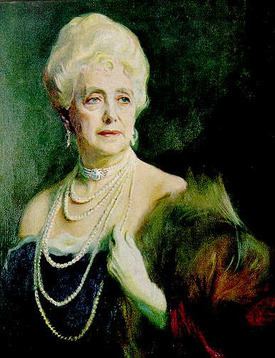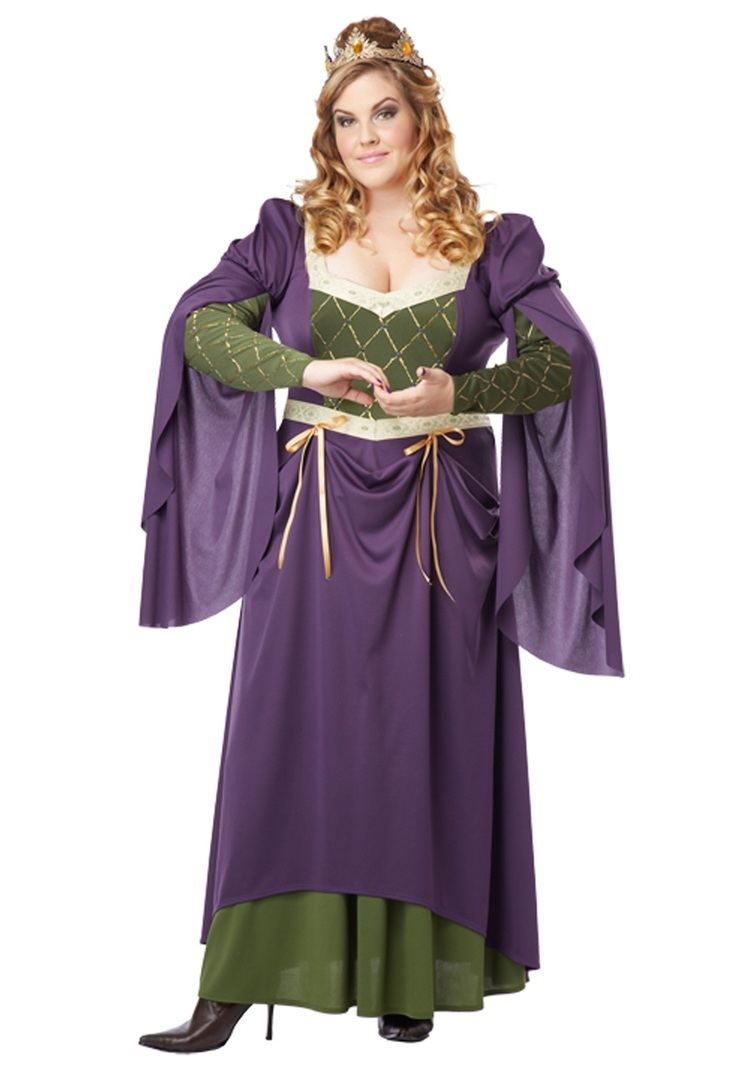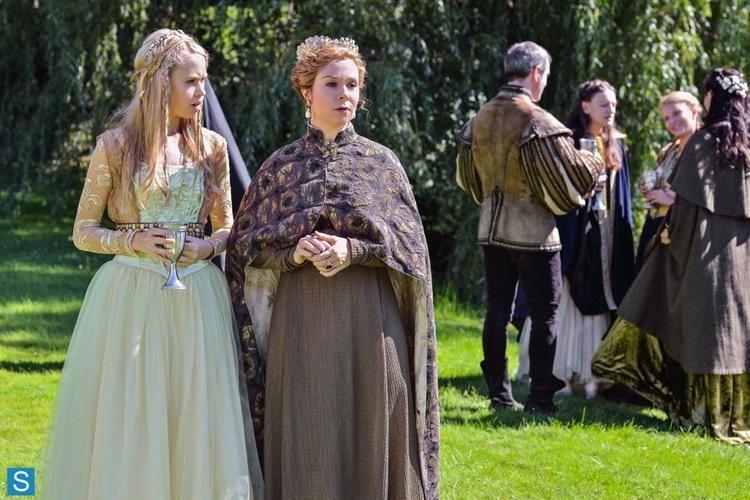 | ||
Melania trump before she was first lady in waiting
A lady-in-waiting or Court Lady is a female personal assistant at a court, royal or feudal, attending on a royal woman or a high-ranking noblewoman. Historically, in Europe, a lady-in-waiting was often a noblewoman from a family in "good society", but who was of lower rank than the woman on whom she attended. Although she may or may not have received compensation for the service she rendered, a lady-in-waiting was considered more of a companion to her mistress than a servant.
Contents
- Melania trump before she was first lady in waiting
- History
- Duties
- Africa
- Austria
- Belgium
- Britain
- Cambodia
- China
- Denmark
- Greece
- France
- Germany
- Italy
- Japan
- Korea Joseon
- The Netherlands
- Norway
- Russia
- Spain
- Sweden
- Notable examples
- England and Great Britain
- Korea
- Thailand
- References

In other parts of the world outside Europe, the lady-in-waiting, often referred to as palace woman, was often in practice a servant or a slave rather than a high ranking woman, but still had about the same tasks, functioning as companions and secretaries to their mistresses. In courts where polygamy was practiced, a court lady was formally available to the monarch for sexual services, and she could become his wife or concubine.

Lady-in-waiting or court lady is often a generic term for women whose relative rank, title, and official functions varied, although such distinctions were also often honorary. A royal woman may or may not be free to select her ladies, and, even when she has such freedom, her choices are usually heavily influenced by the sovereign, her parents, her husband, or the sovereign's ministers (for example, in the Bedchamber crisis).

History

The development of the office of lady-in-waiting in Europe is connected to that of the development of a royal court. During the Carolingian Empire in the 9th-century, Hincmar describe the royal household of Charles the Bald in the De Ordine Palatii from 882, in which he states that court officials took orders from the queen as well as the king. Already Merovingian queens are assumed to have had their personal servants, and in the 9th-century it is confirmed that Carolingian queens had an entourage of guards from the nobility as a sign of their dignity, and some officials are stated to belong to the queen rather than the king.

In the late 12th-century, the queens of France are confirmed to have had their own household, and noblewomen are mentioned as ladies-in-waiting. During the Middle Ages however, the household of a European queen consort was normally small and the actual employed ladies-in-waiting, rather than the wives of noblemen accompanying their husbands to court, was very small: in 1286, the queen of France had only five ladies-in-waiting in her employ, and it was not until 1316 that her household was separated from that of the royal children.

The role of ladies-in-waiting in Europe changed dramatically during the age of the Renaissance, when a new ceremonial court life, where women played a significant part, developed as representation of power in the courts of Italy and spread to Burgundy, from Burgundy to France, and to the rest of the courts of Europe. The court of the Duchy of Burgundy was the most elaborate in Europe in the 15th-century and became an example to France when the French royal court expanded in the late 15th-century and introduced new offices for both men and women to be able to answer to the new renaissance ideal. From small circle of married femmes and unmarried filles, with a relatively humble place in the background during the middle ages, the number of French ladies-in-waiting were rapidly expanded, divided into an advanced hierarchy with several offices and given an important and public role to play in the new ceremonial court life in early 16th-century France. This example was followed by other courts in Europe, were courts expanded and became more ceremonial during the 16th-century, and the offices, numbers and visibility of women expanded in the early modern age.

During the late 19th-century and the early 20th-century, however, most European courts started to reduce their court staff, often due to new economic and political circumstances which made court representation more questionable.
Duties

The duties of ladies-in-waiting varied from court to court, but functions historically discharged by ladies-in-waiting included proficiency in the etiquette, languages, and dances prevalent at court; secretarial tasks; reading correspondence to her mistress and writing on her behalf; embroidery, painting, horse riding, music making and participation in other queenly pastimes; wardrobe care; supervision of servants; keeping her mistress abreast of activities and personages at court, and discreetly relaying messages upon command.
Africa
A number of tribes and cultural areas in the African continent, such as the Lobedu people of Southern Africa, had a similar custom on ladies-in-waiting in historic times.
Within certain traditional states of the Bini and Yoruba peoples in Nigeria, the queen mothers and high priestesses were considered "ritually male" due to their social eminence. Due to this fact, they were often attended on by women who belonged to their harems in much the same way as their actually male counterparts were served by women who belonged to theirs.
Although these women effectively functioned as ladies-in-waiting, were often members of powerful families of the local nobility in their own right, and were not usually used for sexual purposes, they were none-the-less referred to as their principals' wives.
Austria
In the late middle ages, when the court of the emperor no longer moved around constantly, the household of the empress, as well as the equivalent household of the German princely consorts, started to develop a less fluid and more strict organisation with set court offices.
The court model of the Duchy of Burgundy, as well as the Spanish court model, came to influence the organisation of the Austrian imperial court during the 16th-century, when the Burgundian Netherlands, Spain and Austria was united through the Habsburg dynasty.
In the early and mid 16th-century, the female courtiers kept by female Habsburgs in the Netherlands and Austria was composed of one hofmesterees ('Court mistress') or dame d'honneur who served as the principal lady in waiting; one hofdame or Mere de filles, who was second in rank and deputy of the hofmesterees as well as being in charge of the eredames (maid of honour), also known as demoiselle d'honneur, fille d'honneur or Junckfrauen depending on language, and finally the chamber maids, kamenisters. During the tenure of Maria of Austria, Holy Roman Empress in the mid 16th-century, however, the court of the empress was organised in accordance with the Spanish court model, and after she left Austria, there was no further household of an empress until the 1610s. This resulted in a mix of Burgundian and Spanish customs when the Austrian court model was created.
In 1619, a set organisation was finally established for the Austrian Imperial court which came to be the characteristic organisation of the Austrian-Habsburg court roughly kept from this point onward. The first rank of the female courtiers was the Obersthofmeisterin (Mistress of the Robes), who was second in rank after the empress herself, and responsible for all the female courtiers. Second rank belonged to the ayas, essentially governesses of the imperial children and heads of the children's court. Third in rank was the Fräuleinhofmeisterin: she was the replacement of the Obersthofmeisterin when necessary, but otherwise had the responsibility of the unmarried female courtiers, their conduct and service. The rest of the female noble courtiers consisted of the Hoffräulein (maid of honour), unmarried females from the nobility who normally served temporarily until marriage. The Hoffräulein could sometimes be promoted to Kammerfräulein (Maid of honor of the Chamber).
The Austrian court model was the role model for the princely courts in Germany. The German court model in turn became the role model of the early modern Scandinavian courts of Denmark and Sweden.
Belgium
The Kingdom of Belgium was founded in 1830, after which a royal court was founded, and ladies-in-waiting were appointed for Louise of Orléans when she became the first queen of Belgium in 1832. The female office holders of the queens household was created from the French model and composed of one dame d'honneur, followed by several ladies-in-waiting named dame du palais, in turn over ranking the premiere femme du chambre and the femme du chambre.
The ladies-in waiting have historically been chosen by the Queen herself from among the Catholic noble houses of Belgium. The chief functions at court were undertaken by members of the higher nobility, involving much contact with the royal ladies. Belgian princesses were assigned a lady upon their 18th birthday. Princess Clementine was given a Dame by her father, a symbolic act of adulthood.
When the Queen entertains, the ladies welcome guests and assist the hostess in sustaining conversation.
Britain
In England, the court life of the Duchy of Burgundy served as an example when Edward IV created the Black Book of the Household in 1478, and the organisation of the English royal household was essentially set from that point onward.
The ladies-in-waiting were headed by the Mistress of the Robes, followed in rank by the First Lady of the Bedchamber, who supervised the group of Lady of the Bedchamber (typically wives or widows of peers above the rank of earl), in turn followed by the group of Woman of the Bedchamber (usually a daughter of a peer) and finally the group of Maid of honour, whose service entitled them to the style of The Honourable for life. This system has formally remained roughly the same. However, in practice, many offices have since then been left vacant. For example, in recent times, Maids of Honour have only been appointed for coronations.
The duties of ladies-in-waiting at the Tudor court were to act as royal companions, and to accompany the Queen wherever she went. Tudor queens often had wide personal latitude in selection of their ladies-in-waiting. Usually ladies-in-waiting came from families that were highly thought of in good society; the nobility, court officials, knights and military officers, or trusted provincial supporters of the dynasty. Female relatives were often appointed on the presumption that they could be trusted as confidantes to the queen; Lady Margaret Lee was a Lady of the Privy Chamber to Queen Anne Boleyn, just as Lady Elizabeth Seymour-Cromwell was to Queen Jane Seymour.
In the current Royal Household of the United Kingdom Lady-in-Waiting is a woman attending a female member of the Royal Family. A woman attending on a Queen Regnant or Queen Consort is often (informally) known by the same title, but is more formally styled either: Woman of the Bedchamber, Lady of the Bedchamber or Mistress of the Robes, depending on which of these offices she holds. The Women are in regular attendance, but the Mistress of the Robes and the Ladies of the Bedchamber are normally required only for ceremonial occasions. The phrase Lady-in-Waiting to The Queen has, however, been used in formal documents to denote which of the Women is actually "on duty" at any one time.
As of 2016, the Senior Lady-in-Waiting to Queen Elizabeth II is Mistress of the Robes, Fortune FitzRoy, Duchess of Grafton. The other Ladies-in-Waiting are Virginia Ogilvy, Countess of Airlie; Diana, Lady Farnham; The Hon Mary Anne Morrison; The Lady Susan Hussey; The Lady Elton; The Hon Mrs Whitehead, (daughter of Frederick Millar, 1st Baron Inchyra); Jennifer Gibbs (Mrs Michael Gordon Lennox) and Philippa de Pass, wife of Lieutenant Commander Robert de Pass.
Cambodia
In Cambodia, the term "ladies-in-waiting" refers to high ranking female servants who served food and drink, fanned and massaged, and sometimes provided sexual services to the King. Conventionally, these women could work their way up from maids to ladies-in-waiting, concubines, or even queen consort.
The six favorite court ladies of King Sisowath of Cambodia were probably initially drawn from the ranks of classical royal dancers of the lower class. He was noted for having the most classical dancers as concubines. The imperial celestial dancer, Apsara, was one of these. This practice of drawing from the ranks of royal dancers began in the Golden Age of the Khmer Kingdom.
Srey Snom (Khmer: ស្រីស្នំ) is the Cambodian term for the Khmer "lady-in-waiting".
China
The ladies-in-waiting in China, referred to as palace women, palace ladies or court ladies, were all formally if not always in practice a part of the emperors harem, regardless of their task, and could be promoted by him to the rank of official concubine, consort or even empress. Already the emperors of the Han dynasty in antiquity is reported to have had a harem of thousands of palace women, although the actual numbers is unconfirmed.
At least during the Song dynasty (960-1279), the palace women were divided in three groups: Imperial women, consisting of concubines and consorts; Imperial daughters, consisting of daughters and sisters of the emperor; and the female officials and assistants, who performed a wide range of tasks and could potentially be promoted to that of concubine or consort. Women from official elite families could be chosen to become empress, consort or concubine immediately upon their entrance to the palace, but the emperor could also promote any female court official to that post, as they were officially all members of his harem. The female court officials and attendants were normally selected from trusted families and educated for their task, which could be a wide range from female attendant to an Imperial woman, musician, chamber maid or official with the task to organize court functions.
This system was roughly the same during the Qing dynasty (1644-1912), when there were also a class of Imperial women selected immediately as consorts or concubines, but the class of female court attendants were all available to be promoted to concubines and consorts by the emperor. During the Qin dynasty, Imperial women were selected from among the teenage daughters of the Manchu official banner families, who were drafted to an inspection as imperial consorts or concubines before they could marry. Similarly, palace maids were drafted from lower official and banner classes before they could marry. After their selection, palace maids were educated as personal attendants to consorts, female officials within court rituals or other tasks, and were also available for the emperor to promote to consort or concubine. Below the palace maids were the maidservants, who were selected the same way by a draft among the daughters of soldiers.
Denmark
The early modern Danish court was organized according to the German court model, in turn inspired by the Imperial Austrian court model, from the 16th century onward.
The highest rank female courtier to a female royal was the hofmesterinde (Court Mistress) or, from 1694/98 onward, Overhofmesterinde (Chief Court Mistres), equivalent to the Mistress of the Robes, normally an elder widow, who supervised the rest of the ladies-in-waiting. The rest of the female courtiers were composed of one Kammerfrøken (Senior Maid of Honour), followed by a group of hofdame ('court lady') with the title of Hoffrøken (maid of honour). They were followed by the non noble female court employees not ranking as ladies-in-waiting, such as the chamber maids.
This hierarchy was roughly in place from the 16th century until the death of king Christian IX of Denmark in 1906. During the 20th century most of these titles came of use and all ladies-in-waiting at the royal Danish court are now referred to as hofdame ('court lady').
Greece
During the Byzantine Empire, the Byzantine empress was attended by a female court (the sekreton tōn gynaikōn), which consisted mostly of the wives of high-ranking officials, who wore the feminine versions of their husbands' titles. The only specifically female dignity was that of the Zoste patrikia, the chief lady-in-waiting and female attendant of the empress, who was the head of the women's court and often a relative of the empress; this title existed at least since the 9th-century.
The Kingdom of Greece was established in 1832 and its first queen Amalia of Oldenburg organized the ladies-in-waiting of its first royal court in one Grande-Maitresse, followed by the second rank dame d'honneur, and the third rank dame de palais.
France
The queen of France is confirmed to have had a separate household in the late 12th-century, and an ordinance from 1286 notes that the queen of France, queen Joan I of Navarre, had a group of five ladies (Dames) and maids-in-waiting (Damoiselles): in the 1480s, French ladies-in-waiting were divided into Femmes mariées (married ladies-in-waiting) and Filles d’honneur (maid of honour).
However, the queen's household and the number of female courtiers during the middle ages was very small in France, as in most European courts: it was not until the end of the 15th-century and early 16th-century that emulation of the new courts of the Italian Renaissance made ladies-in-waiting fashionable in official court ceremonies and representation, and female court offices became more developed and numerous in the French court as well as in other European courts. The introduction of ladies-in-waiting increased in great numbers at the French court at this time: from a mere five in 1286 and still only 23 in 1490, to 39 in 1498 and circa 54 during the 16th-century. This expansion of female presence at court has been attributed to both Anne of Brittany, who encouraged all male courtiers to send their daughters to her, and to Francis I of France, who was criticized for bringing to court "the constant presence" of large crowds of women, who gossiped interfered in state affairs; Francis I once said: ‘a court without ladies is a court without a court’.
The first ranked female courtier in the French royal court was the Surintendante de la Maison de la Reine (Mistress of the Robes) to the Queen. The Surintendante and the Governess of the Children of France were the only female office holders in France to give an oath of loyalty to the King himself. This office was created in 1619, and vacant between the death of Marie Anne de Bourbon (1697–1741) and the appointment of Marie Louise of Savoy-Carignan, Princesse de Lamballe in 1775.
The second highest rank was that of the Première dame d'honneur, who could act as the stand-in of the Surintendante and had about the same tasks, hiring and supervising the female courtiers and the queens daily routine and expenditure. This post was created in 1523 and had originally been highest female court office.
The 3rd rank belonged to the dame d'atour, who formally supervised the queens wardrobe and jewelry and the dressing of the queen. This post was created in 1534.
The 4th rank was that of the dames, from 1523 named dame d'honneur composed of ladies-in-waiting whose task was simply to serve as companions and attending and assisting with court functions.
The 5th rank was the filles d'honneur or demoiselles d'honneur (maid of honour), unmarried daughters of the nobility, who had the same tasks as the dames but was mainly placed at court to learn etiquette and look for a spouse. They were supervised by the governante and the sou governante. The position of filles d'honneur and dames was abolished in 1674, and replaced by the dame du palais, twelve married noblewomen with the same tasks. The filles were from 1531 supervised by the Gouvernante de filles, a lady-in-waiting who had the task to chaperone them: this post was divided in to several from 1547 onward.
The 6th rank were the première femme de Chambre, who in turn over ranked the remaining femme de chambres and lavandières. The premiere femme de chambre had the keys to the queens rooms and could recommend and deny audiences to her, which in practice made her position very powerful at court.
During the First Empire, the principal lady in waiting of the empress was the dame d'honneur, followed by between 20 and 36 dame du palais.
During the Bourbon Restoration, Marie Thérèse of France restored the pre-revolutionary court hierarchy.
During the Second Empire, the female courtiers of the empress was composed by the first rank Grand-Maitresse and the second rank dame d'honneur, followed by six (later twelve) dame du palais.
Germany
The early modern Princely courts in Germany were modeled after the imperial Austrian court model. This court model divided the ladies-in-waiting in an chief lady-in-waiting named obershofmeisterin (a widowed or married elder woman) who supervised the hoffräulein (maids of honour), of which one or two could be promoted to the middle rank of kammerfräulein (maid of honour of the chamber).
The princely German courts in turn became the role model of the Scandinavian courts of Denmark and Sweden in the 16th-century.
After the end of the German Roman Empire in 1806 and the establishment of several minor kingdoms in Germany, the post of staatsdame (married ladies-in-waiting) were introduced in many German princely and royal courts. At the Imperial German court, the ladies-in-waiting were composed of one oberhofmeisterin in charge of several hofstaatsdame or palatsdame.
Italy
Italy was united in to the Kingdom of Italy in 1870. The ladies-in-waiting of the queen of Italy was headed by the Dama d’Onore, followed by the Dame di Corte, and finally the Dame di Palazzo. The Dama d’Onore was nominally the chief lady-in-waiting, but in practice often limited her service to state occasions; the Dame di Corte was the regular ladies-in-waiting who personally attended to the queen, while the Dame di Palazzo was honorary courtiers attached to the royal palaces in particular cities, such as Florence, Turin and so forth, and only served temporary when the queen visited the city in question: among these, only the Dame di Palazzo attached to the royal palace of the capital of Rome served more than temporary.
Japan
In Japan, the imperial court offices was normally reserved for members of the court aristocracy and the ladies-in-waiting or palace attendants were commonly educated members of the nobility.
During the Heian period (794–1185) women could hold court offices of substantial responsibility, managing the affairs of the emperor. Female palace attendants were employed by the imperial Bureau of Palace Attendants from among the court aristocracy, but were required to be of sufficient education in Chinese classics to be accepted.
During the Sengoku period (1467–1603), the highest rank of a lady-in-waiting was "female assistant to the major counselor", who ran the affairs of the daily life of the imperial household. The second rank was hoto no naishi ("female palace attendant"), who acted as intermediary between the emperor and those seeking audience and issued his wishes in writing. Ladies-in-waiting acted as imperial secretaries and noted the events at court, visitors and gifts in the official court journals.
In contrast to China, women palace attendants managed the palace of the imperial harem rather than eunuchs, and could hold high court offices in the emperors personal household. Female palace attendants were divided in two classes, which in turn had several ranks, signifying their task. The first class consisted of the nyokan or ladies-in-waiting who held court offices, naishi-kami (shoji) naishi-suke (tenji) and naishi-no-jo (shoji) and the second class was the female palace attendants myobu, osashi, osue, nyoju. The ladies-in-waiting worked as personal assistants, tending the emperors' wardrobe, assisting the emperors' baths, serving meals, performing and attending court rituals. Ladies-in-waitings could be appointed concubines, consorts or even empresses by the emperor or the heir to the throne. The function of a lady-in-waiting as potential concubine was abolished in 1924.
Korea (Joseon)
Gungnyeo (literally "palace women") is a Korean term referring to women who wait upon the King and other royalty in traditional Korean society. It is short for gungjung yeogwan, which translates as "a lady officer of the royal court".
Gungnyeo includes sanggung (palace matron) and nain (assistant court ladies), both of which hold rank as officers. The term is also used more broadly to encompass women in a lower class without a rank such as musuri (lowest maids in charge of odd chores), gaksimi, sonnim, uinyeo (female physicians) as well as nain and sanggung.
The Netherlands
The court of the Duchy of Burgundy, which was situated in the Netherlands in the 15th-century, was famous for its elaborate ceremonial court life and became a role model for several other courts of Europe. The Burgundian court model came to be the role model for the Austrian imperial court during the 16th-century, when the Burgundian Netherlands and Austria was united through the Habsburg dynasty.
In the 16th-century, the ladies-in-waiting in the courts of the Habsburg governors of the Netherlands, Margaret of Austria and Mary of Hungary (governor of the Netherlands), was composed of one hofmeesteres ('Court mistress') or dame d'honneur who served as the principal lady in waiting; one hofdame or Mere de filles, who was second in rank and deputy of the hofmesterees as well as being in charge of the eredames (maid of honour), also known as demoiselle d'honneur, fille d'honneur or Junckfrauen, and finally the chamber maids, kameniersters, all with different titles depending on language in the multilingual area of the Netherlands.
The Kingdom of the Netherlands was founded in 1815, signifying the organisation of a royal court. In the 19th-century, the ladies-in-waiting of the Dutch court was headed by the Grootmeesteres ('Grand Mistress', equivalent to Mistress of the Robes), of second rank was the Dames du Palais (married ladies-in-waiting), followed by the third rank Hofdames ('court ladies', equivalent to maid of honour).
Princess Beatrix of the Netherlands had a total of seven Hofdames ('court ladies'). They accompanied the Queen and the other female members of the Royal House during visits and receptions at the Royal Court. The monarch paid for their expenses, but they did not receive any salary. Not all of these ladies were members of the Dutch aristocracy, but each had a "notable" husband. Excellent social behavior and discretion was the most important recommendation for becoming a Hofdame. In 2012 the Hofdames were Ietje van Karnebeek-van Lede, Lieke Gaarlandt-van Voorst van Beest, Julie Jeekel-Thate, Miente Boellaard-Stheeman, Jonkvrouwe Reina de Blocq van Scheltinga, Elizabeth Baroness van Wassenaer-Mersmans and Bibi Baroness van Zuylen van Nijevelt-Jonkvrouwe den Beer Poortugael.
Queen Maxima of the Netherlands reduced the number of hofdames to 3, her hofdames are: Lieke Gaarlandt-van Voorst van Beest, Pien van Karnebeek-Thijssen and Annemijn Crince le Roy- van Munster van Heuven.
The Grootmeesteres (Grandmistress) was the highest-ranking lady at the Royal Court. Since 1984 the position has been held by Martine van Loon-Labouchere, descendant of the famous banker family, a former diplomat and the widow of Jonkheer Maurits van Loon of the famous Amsterdam canal estate.
After their voluntary retirement, Hofdames were appointed to the honorary Royal Household. The honorary Royal Household still distinguishes between Dames du Palais and Hofdames, but the category Dames du Palais is slated for discontinuation.
Norway
During the union of Denmark-Norway from 1380 until 1814, the Danish royal court in Copenhagen was counted as the Norwegian royal court, and thus there was not royal court present in Norway during this period.
During the union between Norway and Sweden from 1814 to 1905, there were Norwegian courtiers appointed who served during the Swedish royal family's visits to Norway. The female courtiers were appointed according to the Swedish court model, that is to say the class of hovfröken (Maid of honor); kammarfröken (Chief Maid of Honor) and statsfru (Lady of the Bedchamber), all supervised by the overhoffmesterinne (Mistress of the Robes): these posts were first appointed in 1817
When the union between Sweden and Norway was dissolved in 1905, a permanent Norwegian royal court was established.
Russia
In the court of Muscovite Russia, the offices of lady-in-waiting to the Tsarina were normally divided among the boyarinas (widows or wives of boyars), often from the family and relatives of the Tsarina.
The first rank among the offices of the ladies-in-waiting were the Tsarina's Treasurer; the second were the group of companions; the third were the royal nurses to the princes and princesses (were the nurses of the male children over ranked); among the nurses, the most significant post was that of the mamok, the head royal governess, who were normally selected from elder widows, often relatives to the Tsar or Tsarina. All offices were appointed by royal decree. The group of ladies-in-waiting were collectively above the rank of the Svetlichnaya, the tsarin'as sewing women; the postelnitsy (the tsarina's chamber women and washing women) and the officials who handled the affairs of the staff.
In 1722, this system was abolished and the Russian Imperial court was reorganized in accordance with the reforms of Peter the Great to Westernize Russia, and the old court offices of the Tsarina was replaced with court offices inspired by the German model; see Lady-in-waiting of the Imperial Court of Russia.
Spain
The royal court of Castile included a group of ladies-in-waiting for the queen named camarera in late 13th-century and early 14th-century, but it was not until the 15th-century that a set organisation of the ladies-in-waiting is confirmed.
The highest rank female courtier was the Camarera mayor de Palacio (Mistress of the Robes). This office is confirmed from the 1410s. The second rank was shared by the ayas (royal governess), and the guardas (chaperones). The third rank was the dueñas de honor, the married ladies-in-waiting, who were responsible for not only the unmarried damas or meninas (Maid of honour), but also of the female slaves and dwarfs, who were classified as courtiers and ranked before the mozas (maids) and lavanderas (washer women). This characteristic organisation of the Spanish ladies-in-waiting was roughly established already during the reign of Isabella I of Castile (r. 1474-1504), was kept by empress Isabella during the 16th century, and became the standard Spanish court model for ladies-in-waiting.
Sweden
The early modern Swedish court, as well as the Danish equivalent, were re-organized in the early 16th century according to the German court model, in turn inspired by the Imperial Austrian court model. This model roughly organized the female noble courtiers in the class of the unmarried hovfröken (maid of honor, until 1719 hovjungfru) which could be promoted to kammarfröken (Chief Maid of Honor: until 1719 kammarjungfru). They were supervised by the hovmästarinna (Court Mistress, equivalent to Mistress of the Robes), normally a married or widowed elder noblewoman. Under this class of female noble courtiers, were the non-noble female servants. They were headed by the normally married kammarfru (Mistress of the Chamber, roughly equivalent to a Ladies Maid), often of burgher background, who supervised the group of kammarpiga (Chamber Maid).
From the reign of Queen Christina, the hovmästarinna was supervised by the överhovmästarinna (Chief Court Mistress). In 1774, the post of statsfru (Mistress of the State) was introduced, which was the title for the group of married ladies-in-waiting with rank between the hovmästarinna and the kammarfröken.
The Swedish court staff was reduced in size in 1873. The new court protocols of 1911 and 1954 continued this reduction, and many court posts was abolished or no longer filled.
With the exception of the statsfru and the överhovmästarinna, none of the titles above are longer in use. At the death of Queen Louise in 1965, her överhovmästarinna was employed by the King. From 1994, the överhovmästarinna are the head of the court of the King rather than the Queen, while the court of the Queen is headed by the statsfru. There are now only one statsfru, and the other ladies-in-waiting are simply referred to as hovdam ('Court Lady').
Queen Silvia of Sweden has only three hovdamer ('court ladies'). Her chief lady-in-waiting is the statsfru.
Notable examples
These are a list of particularly well known and famous ladies-in-waiting of each nation listed. More can be found in their respective category.
